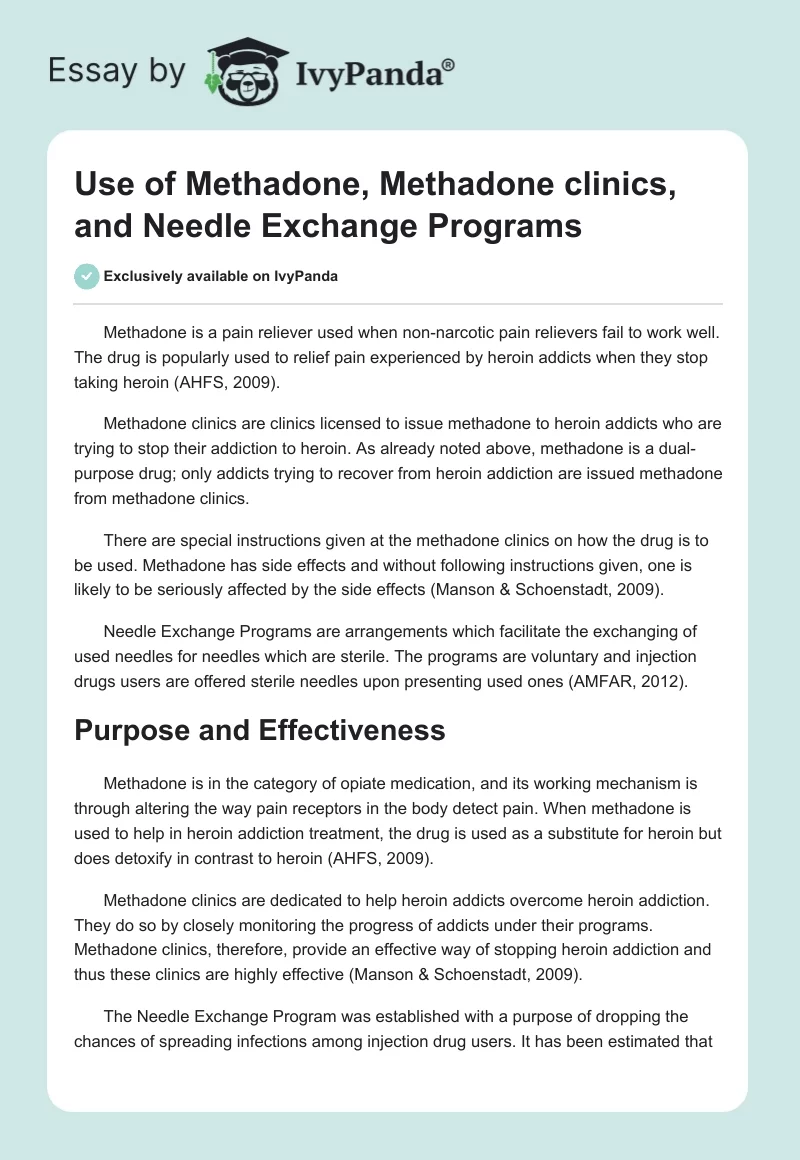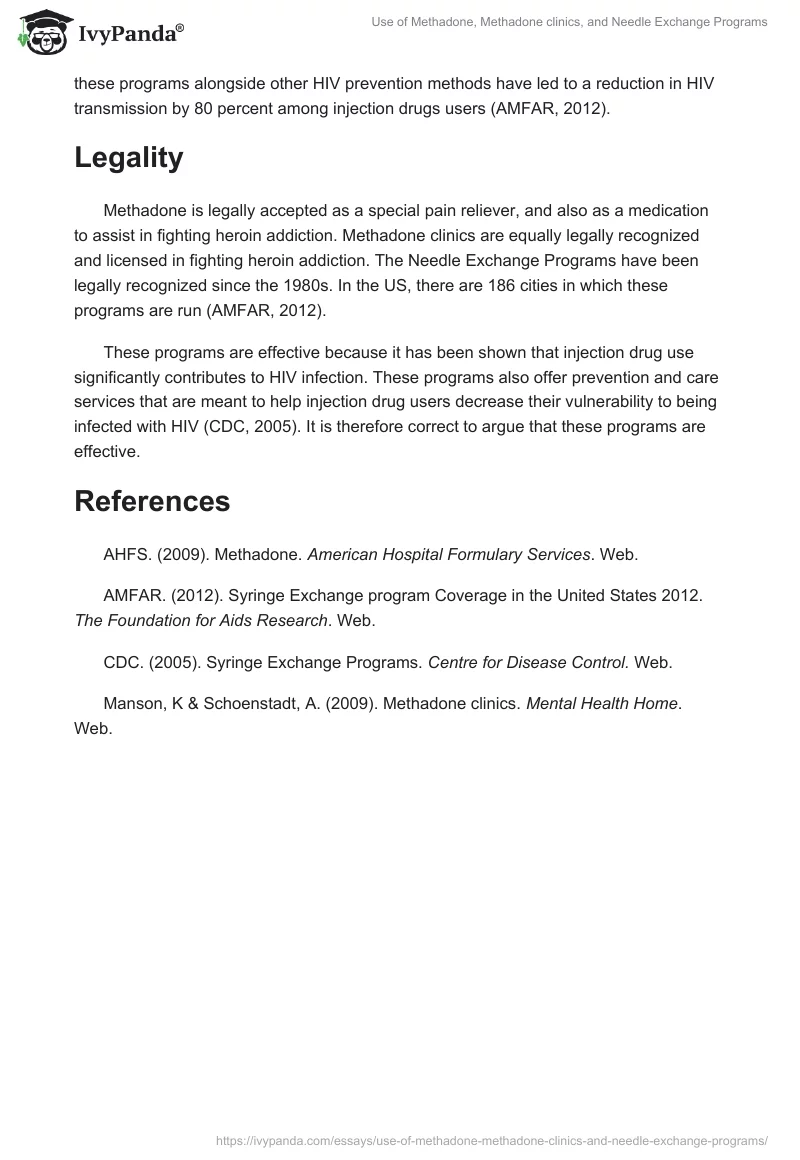Methadone is a pain reliever used when non-narcotic pain relievers fail to work well. The drug is popularly used to relief pain experienced by heroin addicts when they stop taking heroin (AHFS, 2009).
Methadone clinics are clinics licensed to issue methadone to heroin addicts who are trying to stop their addiction to heroin. As already noted above, methadone is a dual-purpose drug; only addicts trying to recover from heroin addiction are issued methadone from methadone clinics.
There are special instructions given at the methadone clinics on how the drug is to be used. Methadone has side effects and without following instructions given, one is likely to be seriously affected by the side effects (Manson & Schoenstadt, 2009).
Needle Exchange Programs are arrangements which facilitate the exchanging of used needles for needles which are sterile. The programs are voluntary and injection drugs users are offered sterile needles upon presenting used ones (AMFAR, 2012).
Purpose and Effectiveness
Methadone is in the category of opiate medication, and its working mechanism is through altering the way pain receptors in the body detect pain. When methadone is used to help in heroin addiction treatment, the drug is used as a substitute for heroin but does detoxify in contrast to heroin (AHFS, 2009).
Methadone clinics are dedicated to help heroin addicts overcome heroin addiction. They do so by closely monitoring the progress of addicts under their programs. Methadone clinics, therefore, provide an effective way of stopping heroin addiction and thus these clinics are highly effective (Manson & Schoenstadt, 2009).
The Needle Exchange Program was established with a purpose of dropping the chances of spreading infections among injection drug users. It has been estimated that these programs alongside other HIV prevention methods have led to a reduction in HIV transmission by 80 percent among injection drugs users (AMFAR, 2012).
Legality
Methadone is legally accepted as a special pain reliever, and also as a medication to assist in fighting heroin addiction. Methadone clinics are equally legally recognized and licensed in fighting heroin addiction. The Needle Exchange Programs have been legally recognized since the 1980s. In the US, there are 186 cities in which these programs are run (AMFAR, 2012).
These programs are effective because it has been shown that injection drug use significantly contributes to HIV infection. These programs also offer prevention and care services that are meant to help injection drug users decrease their vulnerability to being infected with HIV (CDC, 2005). It is therefore correct to argue that these programs are effective.
References
AHFS. (2009). Methadone. American Hospital Formulary Services. Web.
AMFAR. (2012). Syringe Exchange program Coverage in the United States 2012. The Foundation for Aids Research. Web.
CDC. (2005). Syringe Exchange Programs. Centre for Disease Control. Web.
Manson, K & Schoenstadt, A. (2009). Methadone clinics. Mental Health Home. Web.


